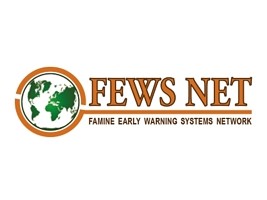|
||||||||||||||||||
|
|
Haiti - Agriculture : Food insecurity, outlook 2022 21/04/2022 10:15:57
Despite slightly above-average rainfall in January, short-cycle winter crops such as maize and beans will be below normal, due to water deficits in November and December 2021. In addition, the forecast for an average rainy season (March-May) would suggest average spring harvests, assuming adequate external support to farmers, especially in areas affected by last year's shocks. Due to the depreciation of the Gourde against the dollar +38% compared to February 2021 and the increase in the cost of public transport, the prices of basic food products remain above their average over 5 years, in proportions greater than 80% Winter and spring agricultural incomes, respectively below and just around the average, in a context of above-average prices, will have a significant impact on the purchasing power of households and therefore their access to food. Most likely food security outcomes February to September 2022 The first period from February to May coincides with the winter harvests which contribute little to the production of the area and with the lean season, characterized by a reduction in the share of local foodstuffs in food consumption, in addition to the depletion of household reserves, it coincides with preparations for the start of the spring agricultural campaign. Winter crops, in particular black beans, roots and tubers, bananas and mangoes from picking, can contribute to household food until March. In the absence of food assistance, below-average incomes, particularly from the sale of crops and labor will not allow households to meet their food needs on the market, with the increase seasonal prices during the lean season. Poor households will continue to adopt crisis strategies: intensification of tree cutting for the production and sale of charcoal, increase in the sale of female animals, consumption of seeds and foods with low nutritional value, consumption early mangoes, among others. Les Cayes, Torbeck, Camp Perin will be Stressed (IPC Phase 2). They will still have to resort to stress strategies such as reducing the number of daily meals, borrowing or buying food on credit, eating less expensive or less preferred foods and reducing adult consumption in favor of children, especially during the lean season. The second period from June to September 2022 coincides with the spring harvests and also with the launch of the summer / autumn campaign. The spring harvests (maize, beans in particular) will contribute to the food of very poor and poor households, even in a context of below-average production. Other local products such as roots and tubers, bananas and real trees can also contribute. A slight improvement in food consumption due to the spring harvests is also possible, this time being a little more diversified. The problem of the duration of the reserves from the harvests remains unresolved and does not exceed one month. On average, less than 19% of households actually constitute food reserves during harvest (Source CNSA, ENSSAN 2021). In addition, some of these will also have to be used as seeds for the summer and autumn agricultural campaigns. It can also reduce the contribution of crops to the food consumption of poor and very poor households. Moreover, given the shocks to livelihoods, it will still be difficult for households to rebuild their livelihoods on their own. However, with harvests in July, albeit below average, then offset somewhat by those of mangoes and other seasonal crops (roots and tubers, banana), and non-agricultural sources of income close to average, Haiti should actually experience a slight improvement in food security conditions. HL/ HaitiLibre
|
|
|
Why HaitiLibre ? |
Contact us |
Français
Copyright © 2010 - 2024 Haitilibre.com |



